What is a storyboard?
You've probably heard this word without knowing what it was. A storyboard is a bit like a comic book, it is a drawing board that represents each shot of your film. On each shot, information is added that will help the development of your film, such as: camera or actor movement, sound, type of shot (aerial, steady, follow, etc.), dialogue, but also information for post-production such as special effects, overlays, 3d. The Storyboard is a vital element during the pre-production of your film, it is the first version of your movie!
The storyboard that we know today was developed in the 1930s by the company Walt Disney Productions, it was then used throughout the years by animation studios to save time on the creation of their production and very quickly adapted by the cinema industry. “Gone with the Wind (1939)” was one of the first live-action films to be completely storyboarded.
The Storyboard also allows for clear communication between the entire project team because we are not all in the director's head and therefore having a visual representation of his vision helps enormously with productivity and communication.
Benefits of Storyboarding
Clarifies Vision: Helps filmmakers translate their vision into something tangible that can be shared and discussed.
Identifies Potential Issues: Early identification of logistical or narrative issues, allowing for adjustments before production starts.
Facilitates Collaboration: Encourages input and collaboration from different departments, enhancing the creative process.
Production Easier: Storyboards help you to make your production faster and easier. It also helps the actors to see the movie before acting and being able to be in their role easier. It avoid also to forget to shoot some scene, because we all know, a shooting never goes like it should be, there is always imprevu
How to create a Storyboard?
Language: You need to know the filmmakers' vocabulary to make sure you're all talking about the same thing when describing scenes, camera angles, shot types, camera movements, dialogue and sound.
Tools: To create a storyboard these days there are several possible options:
- paper and a pencil: it may seem basic, but it can allow you to take a break from your computer and concentrate on your project to unleash your creativity. The downside is that it takes a long time, and any mistakes will certainly force you to start your board again. In any case you will have a beautiful souvenir of your project and who knows, maybe it will be collector's item.
Download our Storyboard Template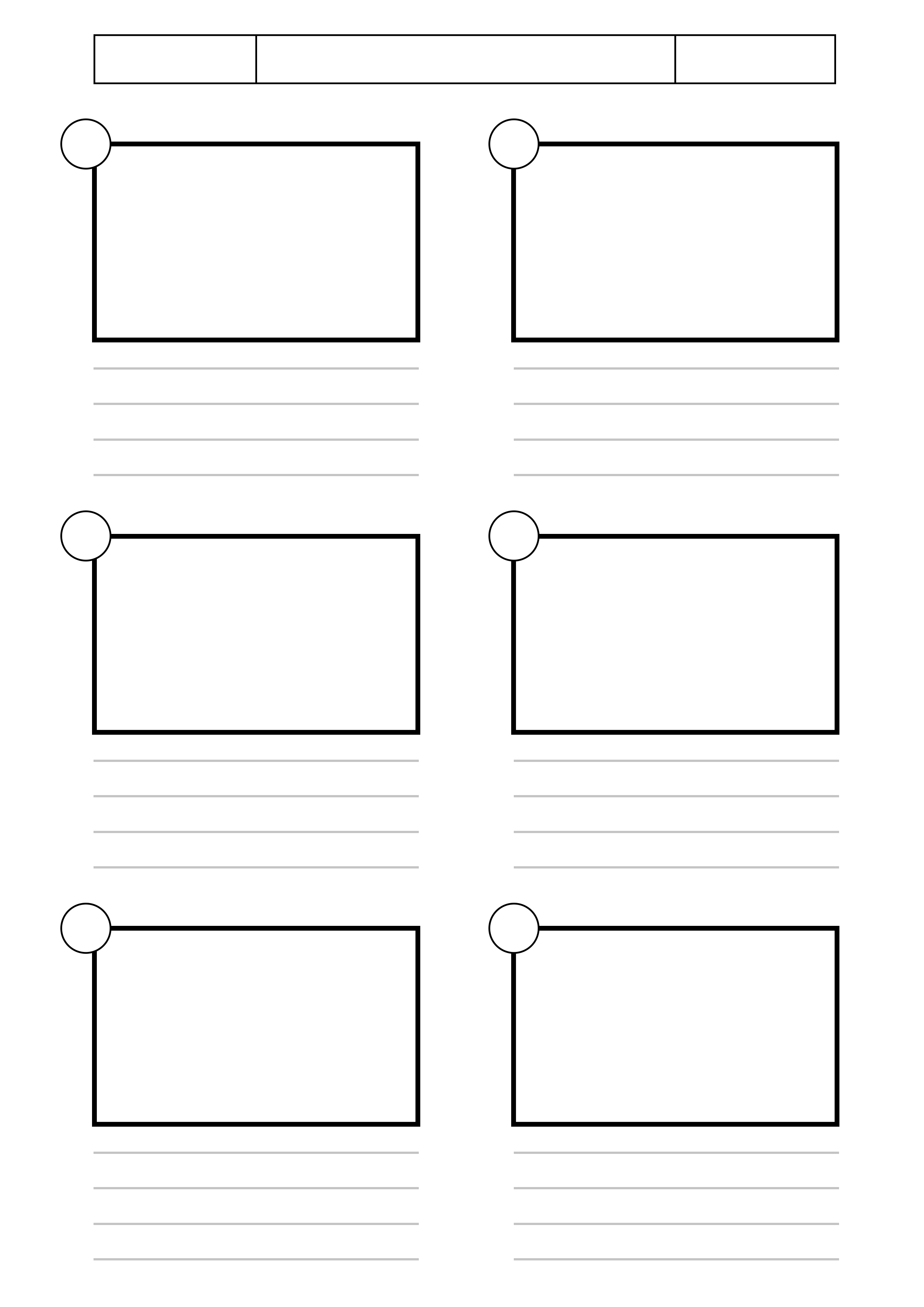
- StoryBoard Software Free:
Storyboarder
Storyboarder offers an ideal solution for those working within tight budget constraints. As an open-source platform, it's completely free and provides a user-friendly interface that includes all essential tools for efficient storyboard creation. This software is not just about drawing quick sketches; it allows for detailed dialogue writing, timing specifications, and shot types. Its unique integration with Photoshop enhances its utility, enabling users to refine their storyboards in Photoshop while automatically syncing changes back to Storyboarder. Additionally, it offers versatile export options, including Premiere, Final Cut, Avid, PDF, and Animated GIF, making it a flexible tool for various project needs.
Canva
Canva simplifies the storyboard process, particularly for beginners or those handling simpler projects. It stands out with its vast library of easy-to-use templates and an extensive collection of over a million stock images, plus the ability to upload your own visuals. The tool's intuitive interface allows for easy scene organization, custom font selection, color customization, and inclusion of detailed headers and subheaders. Collaboration is a breeze with Canva; you can easily share access with team members for joint script or design work, and upon completion, distribute the storyboard via email or as a PDF file. Canva is more than just a design tool; it's a collaborative platform that makes the initial steps into storyboarding accessible and stress-free.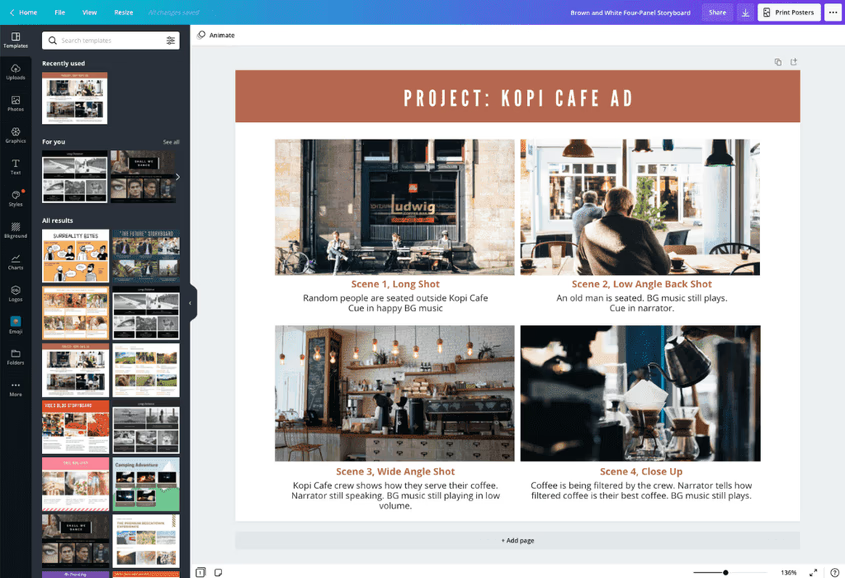
- Storyboard Software Professional:
Adobe Photoshop
Adobe Photoshop, while renowned for its image editing capabilities, is also a powerful tool for storyboarding. Its advanced drawing and painting features allow storyboard artists to create detailed and expressive visuals. With a rich array of brushes and the ability to customize workspaces, Photoshop caters to the nuanced needs of storyboard creation. The software's flexibility is key, enabling artists to bring complex scenes and narratives to life. Available at $9.99 per month, Photoshop offers a familiar and robust environment for artists already acquainted with digital art tools.
Toon Boom Storyboard Pro
Toon Boom Storyboard Pro is arguably the industry standard for professional storyboard creation, particularly in animation and film production. It combines drawing and animation tools, allowing storyboard artists to bring static scenes to dynamic life. The software supports intricate camera movements and integrates seamlessly with scriptwriting tools, making it invaluable for comprehensive pre-visualization. While it's one of the pricier options on the market, with a price tag of $60 per month or a $999 one-time fee, its range of professional features justifies the cost, especially for industry professionals and studios.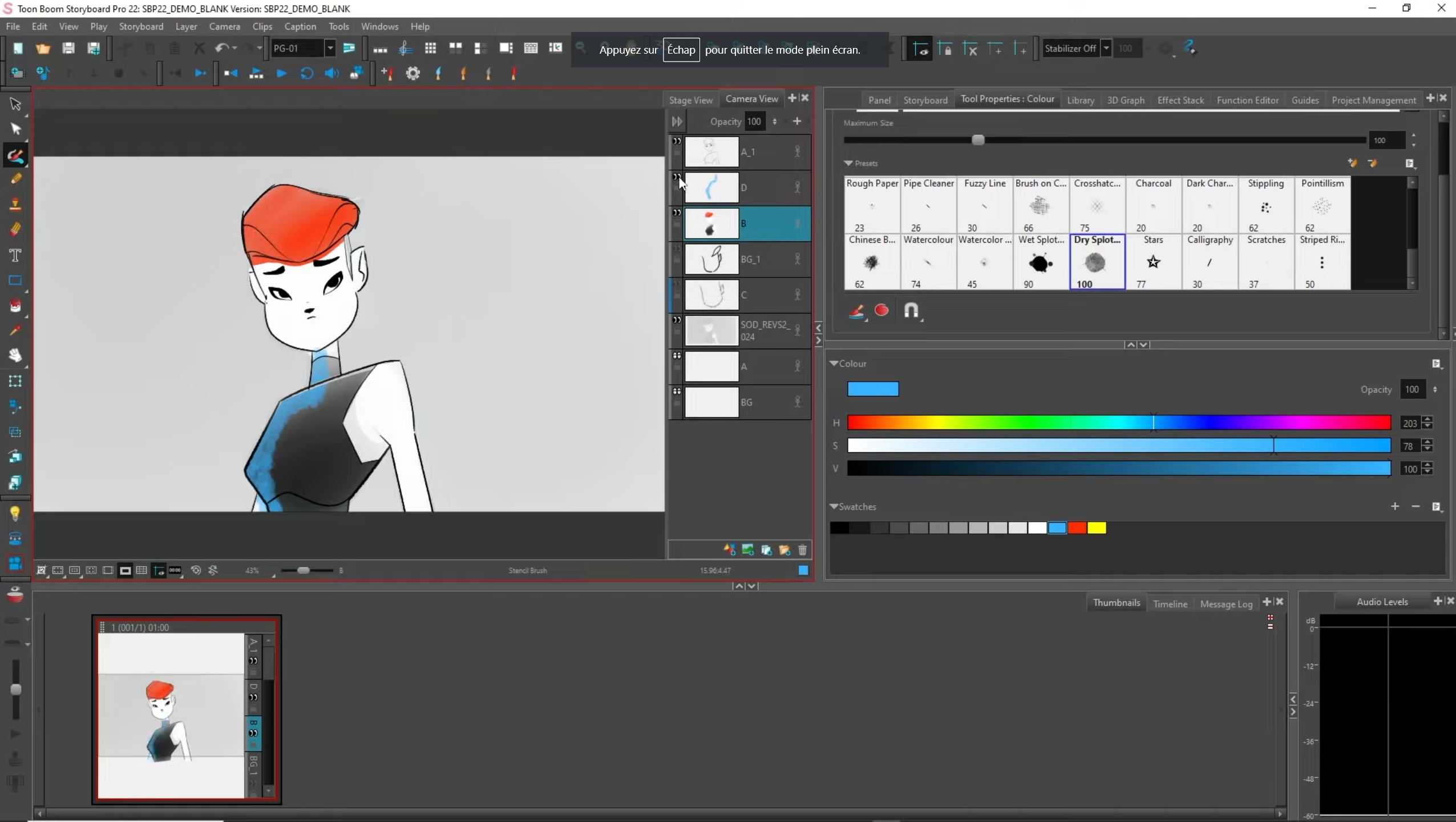
Tips:
- Don’t hesitate to put color on your storyboard to difference the movement of the camera, the movement of the actor, the vfx, etc.
- Put all the information that are coming in your mind and that will be useful for the shooting or every detail that will make you win time.
- Watch all your storyboard because maybe you will have different shot in the same angle or location, this can help you to organize your shot.
Examples in Industry:
Many acclaimed directors, such as Alfred Hitchcock and Martin Scorsese, have relied heavily on storyboarding to plan their iconic scenes. This is some example of storyboard from famous movies:
| Spider Man 2 | Jurassic Park |
 |
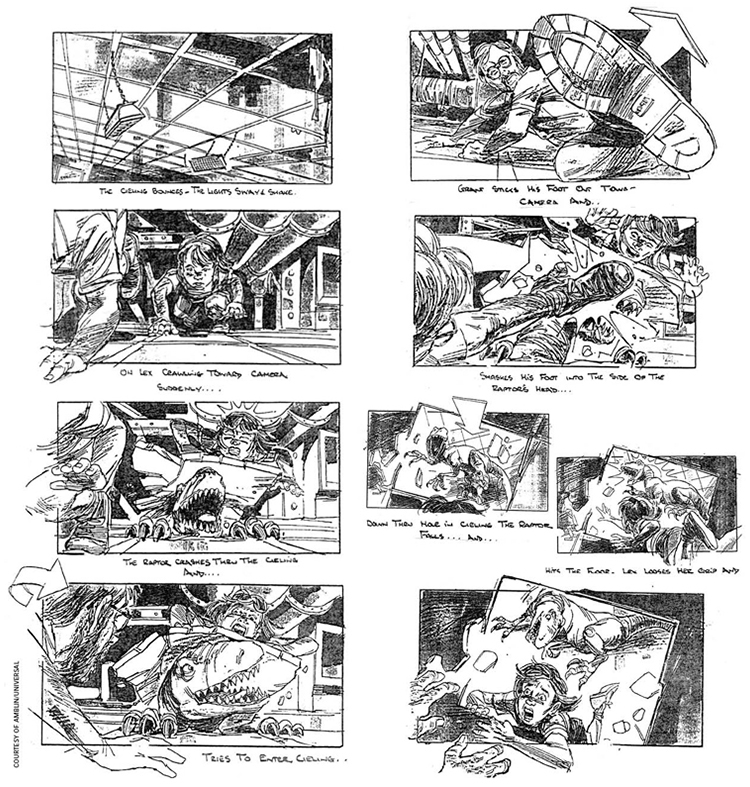 |
| STORYBOARDS: COURTESY OF CHRIS BUCHINSKY | STORYBOARDS: ©LUCASFILM LTD. & TM. ALL RIGHTS RESERVED |
| Pacific Rim | Gladiator |
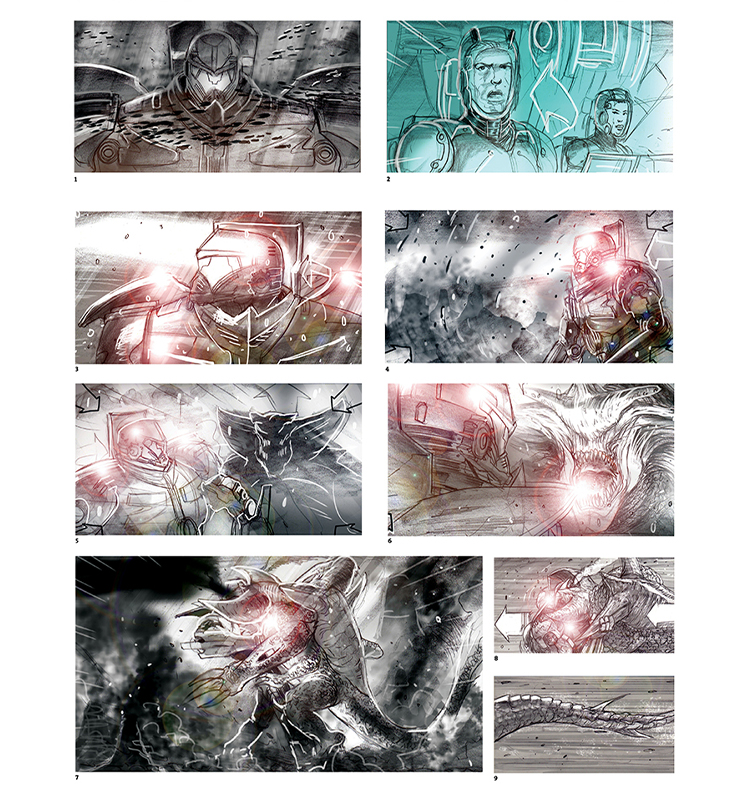 |
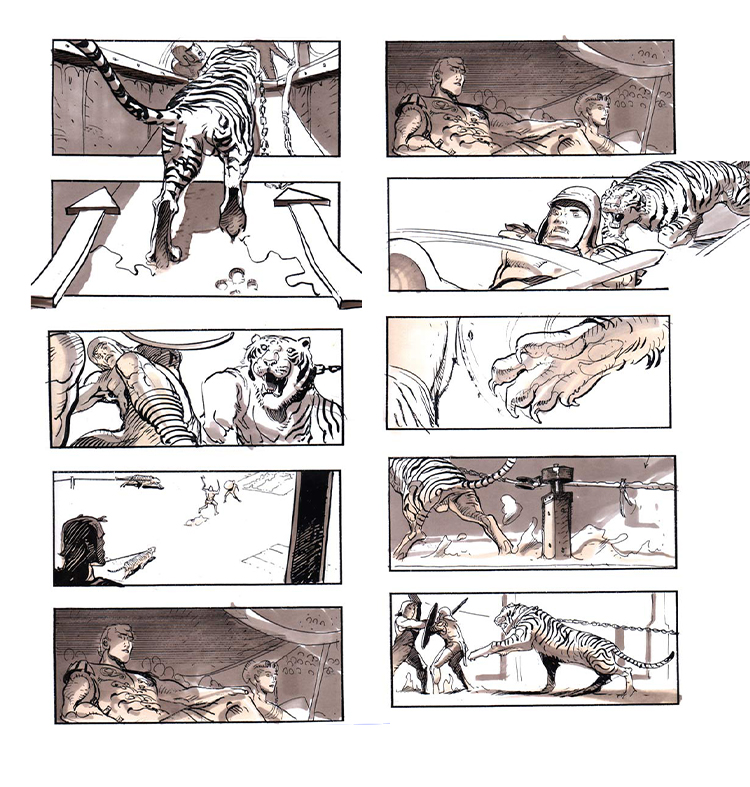 |
| Storyboards: Rob McCallum/Warner Bros.; Photo: Photofest | Credit: Sylvain Despretz © 2000, DreamWorks, LLC/Scott Free |
Conclusion
Storyboarding is an indispensable step in film and video production. It not only aids in visualizing and planning but also enhances collaboration and efficiency, ultimately contributing to a smoother production process and a more cohesive final product.
